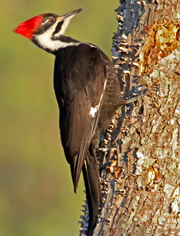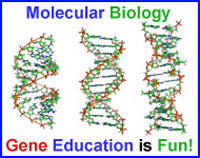Level: 5th grade
Standard: S5P2c
The Fate of Calcium Carbonate - In this activity, you can use a common liquid to detect calcium carbonate!
Level: Various
Click here for an archive of classroom science activities.
May 10 - Saturn at Opposition. The ringed planet will be at its closest approach to Earth and its face will be fully illuminated by the Sun. This is the best time to view and photograph Saturn and its moons. A medium-sized or larger telescope will allow you to see Saturn's rings and a few of its brightest moons.
May 24 - Possible Meteor Storm. In the early morning hours of Saturday, May 24, the Earth will pass through the debris field left behind by a small comet known as P/209 LINEAR. Astronomers are predicting that this interaction may result in a brief but intense burst of meteor activity that could range from dozens to hundreds of meteors per hour. Nothing is certain, but many mathematical models are predicting that this could be the most intense meteor shower in more than a decade.
Source: seasky.org
Previous Issues



This week-long, hands-on camp provides aviation experiences for rising 4th to 6th grade students. The camp is packed with activities that help future aviators understand science, math
and technology. Click here for more details.
As Many Exceptions as Rules: Biology Blog
Chili Peppers Run Hot And Cold - the TRPV1 capsaicin receptor is primarily a heat sensing receptor for thermoregulation of the body. If activated by noxious (painful) high temperatures, it generates a pain signal and initiates a cooling program for the body, including sweating. In an effort to block TRPV1 to create analgesia (no pain), the problem has been that blockers also stop thermoregulation and the patient overheats. This prevents most TRPV1 antagonists (substances that bind the receptor but don’t allow function) from being used as analgesics. But what about in other situations? Read more >>Science Article of the Month
Chernobyl's birds adapting to ionizing radiation -Birds in the exclusion zone around Chernobyl are adapting to -- and may even be benefiting from -- long-term exposure to radiation, ecologists have found. The study is the first evidence that wild animals adapt to ionizing radiation, and the first to show that birds which produce most pheomelanin, a pigment in feathers, have greatest problems coping with radiation exposure. Read more >> | More Articles >>
Do you have a question or a suggestion?
Please email us at:
fernbankmail@fc.dekalb.k12.ga.us

Teacher Resources
![]()
Children's Science
Newsletters
Bird of the Month

Can you I.D. this Bird?
Get the answer in the next issue.
Previous Issue:Blackburnian Warbler
Archive
Tree of the Month

Can you I.D. this tree?
Get the answer in the next issue.
Previous Issue: Dogwood
Archive
Molecule of the Month

Do you know this molecule?
Get the answer in the next issue.
Hint: Makes many people sneeze in the spring
Previous Issue: Nitroglycerin
Archive


